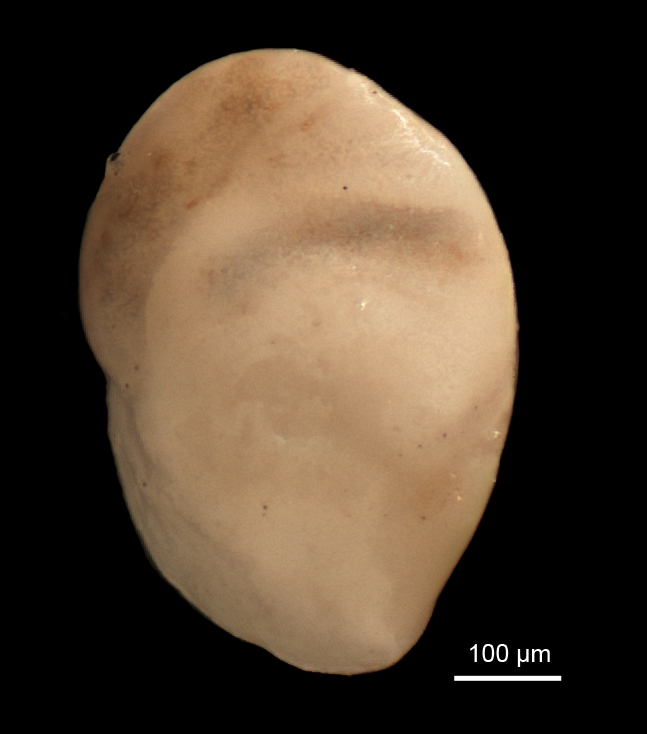Genus Cassidulina
Cassidulina d’Orbigny, 1826 emended Nomura, 1983
Description: Test free, lenticular to compressed-oval, commonly biumbonate; periphery carinate to narrowly rounded; chambers broad to sublunate, biserially arranged and planispirally enrolled, with a set of short, tapering and overlapping end at periphery in last formed coil; sutures tangentially or radially arranged; wall calcareous, hyaline, perforate, optically granular in texture, polished; aperture curved, narrow, elongate slit paralleling the periphery at the base of apertural face, with apertural plate closing most of it; toothplate absent.
Cassidulina limbata Cushman & Hughes, 1925
Cushman and Hughes, 1925, p. 12, pl. 2, fig. 2 a-c; Cushman and Todd, 1947, p. 22, pl. 4, fig. 4; McGann, 2007, p. 66, pl. 10, fig. JJ.
Description: Test nearly circular in side view, the last-formed chamber slightly projecting, periphery slightly lobulate, carinate; chambers very distinct, six pairs in the last formed coil, the central portion of each chamber narrowest; sutures very distinct, broadly limbate, central portion with a distinct umbo of clear shell material; aperture narrow, elongate, parallel to the general axis of coiling. Length 0.75 mm; thickness 0.45 mm.
Remarks: Cushman and Hughes (1925) noted that the limbate and carinate features are variable in this species, but that all have a ‘pinched-in’ character of the middle portion of the chambers.
Distribution: the holotype of Cassidulina limbata is from the Pleistocene Timms Point Beds, San Pedro, southern Californian. Cushman and Todd (1947) recorded this species from central Puget Sound and the San Juan Island. In our study it is documented from deeper water in northeastern Puget Sound.


